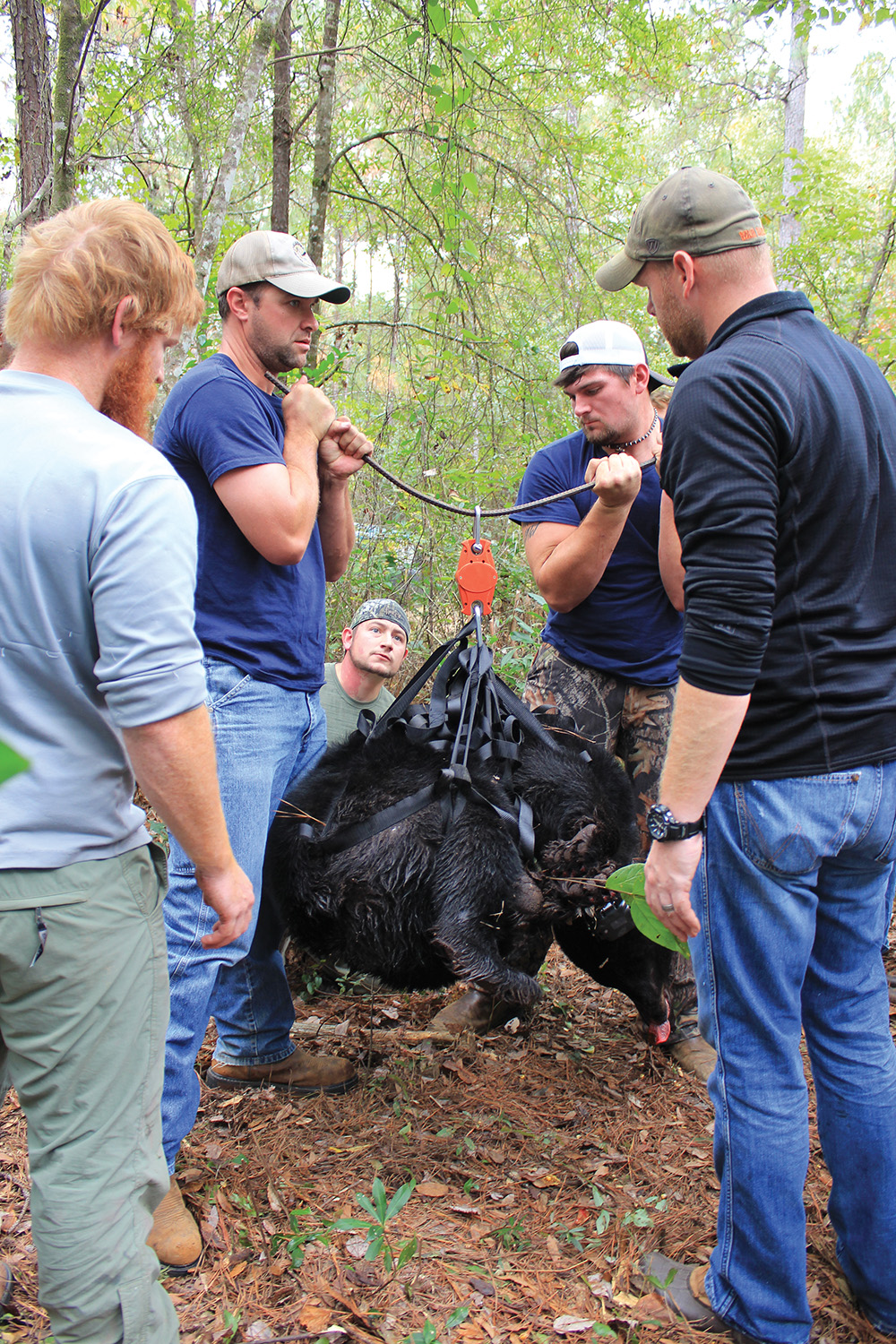As bear and human populations increase, so do contacts
By John N. Felsher
As weather improves, more Alabamians venture outdoors to enjoy hiking, picnicking, turkey hunting, fishing and other activities, but they are not alone! Another very large, toothy Alabama resident could watch their every move.
“Historically, black bears lived throughout the entire state,” says Thomas Harms, the top large carnivore biologist for the Alabama Department of Conservation and Natural Resources. “The population in Alabama is expanding.”
Harms estimates that 400 or so black bears live in the state. Probably about 300 bears live in Baldwin, Mobile, Washington and Monroe counties. Another 50 to 100 live in the Little River Canyon area of northeastern Alabama. Others may wander through just about any county at times.
Most Alabama male bears weigh about 300 to 350 pounds and females about 100 pounds less. Compare that to grizzlies, which could exceed 1,500 pounds and stand more than nine feet tall. While not as big as their giant cousins, black bears still pose a serious danger to anyone who crosses their paths.
Incredibly powerful predators with big claws and teeth, black bears can kill people and cause extensive property damage if they wish. Fortunately, attacks rarely happen. Actually quite shy, the official Alabama state mammal characteristically tries to avoid people. A bear could live near a residential area and no one will see it.
“The last thing a bear wants to see is a human,” Harms says. “We haven’t had any bear attacks in Alabama in modern times. Like most animals, bears have a natural fear of people. It’s surprising how well such a large animal can remain hidden. People can go in the woods every day and not see a bear, but the bear probably sees the person every time. They know when a person is in the woods and they want to get away as quickly as they can.”
Some hikers carry whistles or horns with them to frighten off any bears they might see. Others carry pepper spray as a last resort. Anyone who does spot a bear in the forests should just leave it alone and go somewhere else.
“A bear is not out to eat a human,” Harms says. “If you stumble upon a bear in the woods, let it know you are there so it can get away. Give the bear space. Back away from it. Don’t turn and run away from it because that could trigger a predatory instinct in the bear.”
However, as the bear and human populations continue to grow, the two species might bump into each other more frequently, particularly in places like Mobile County with large human and bear populations. Most bear-human encounters typically involve food. An omnivore, a bear will eat practically anything.

Don’t give bears any reason to come around a house. Never intentionally feed a bear or put out food to attract one. In bear country, put refuse in bear-proof trashcans. At night, bring in pets and pet food. Never leave any food or food residue where a bear can find it. A bear could smell an old sandwich wrapper and tear anything apart looking for food.
“Bears can be dangerous, but they don’t have to be,” Harms says. “If bears begin to associate humans with food, that causes problems. Some people put out corn feeders, whether to hunt deer or just draw animals to the property. Bears find that corn. Bears are also looking for fruit or mast-producing trees.”
Young male bears probably cause the most problems. When young bears reach a certain age, their mother pushes them away as she prepares to breed again. On their own for the first time, these strong youngsters wander long distances looking for food, a mate and territory to call home, one not already occupied by larger bears.
“Young male bears start moving about in May,” Harms says. “They are young and dumb. Up until that time, momma has been telling them what to do. They don’t show any fear of humans and sometimes walk through the middle of big towns. That’s when we get a lot of calls about people seeing bears.”
When a female black bear reaches about two years old, she starts to breed. In Alabama, bears normally breed in July or August. About every two to three years, a female will deliver one to four cubs in January or February. She will likely live about 10 to 20 years and might produce 10 to 15 offspring in her lifetime.
In the spring, hikers, hunters or other outdoor enthusiasts might spot a mother with one or more cubs or possibly just a cub by itself. Never attempt to catch or approach a bear cub. Cubs may look like cute and cuddly fuzzballs, but they are not pets and probably not alone or lost. Momma is likely not far away. Get away from the cub and stay out of that area.
If you see a bear in Alabama, please report it to the ALDCNR at game.dcnr.alabama.gov/BlackBear or call the nearest ALDCNR office.
For more information, call Harms in Spanish Fort at 251-626-5153.
John N. Felsher lives in Semmes, Ala. Contact him through Facebook.





